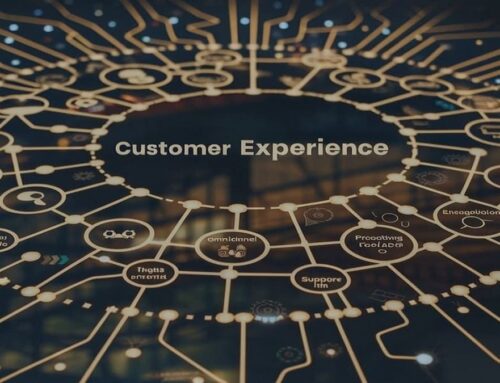
Anticipatory Design
In an era of rapid technological advancement and ever-shifting consumer attitudes, businesses are constantly searching for innovative ways to stand out and build lasting relationships with their customers.
In this ongoing pursuit, Anticipatory Design has emerged as a cutting-edge strategy, offering unprecedented opportunities to not just meet but exceed customer expectations.
What is Anticipatory Design?
Anticipatory design is a concept rooted in the idea of predicting and pre-empting users’ needs through intelligent design and technology. It’s about creating experiences so seamlessly integrated into a user’s life that they appear almost magical.
Essentially, anticipatory design pulls together vast amounts of data, analyzes it and uses the results to deliver exactly what the customer wants—often before they even realize they want it.
In our increasingly data-driven world, anticipatory design leverages algorithms, Artificial Intelligence (AI), Machine Learning (ML) and big data analytics to synthesize user behavior patterns and preferences. These technologies provide valuable insights, allowing businesses to create hyper-personalized experiences that feel intuitive and organic.
The Growing Importance of Customer Experience
To understand why anticipatory design is becoming essential, we first need to look at the growing importance of customer experience. Today’s consumers are not just buying products or services; they are buying experiences.
Customer expectations are higher than ever and businesses are under immense pressure to deliver seamless, efficient and personalized interactions.
Traditional models of customer service and experience design are no longer sufficient. Customers now want more than just reactive support—they expect proactive engagement. This is where anticipatory design comes into play.
How Anticipatory Design Works
- Data Collection and Analysis: The foundation of anticipatory design is data. This includes everything from basic demographic information to intricate patterns of behavior and preference. Businesses collect this data through various touchpoints, including websites, mobile apps, social media and in-store interactions.
- Machine Learning and AI: Once the data is collected, machine learning algorithms and AI systems analyze it to identify patterns and predict future behavior. This could be anything from predicting what product a customer might be interested in next, to determining the optimal time to send a promotional email.
- Actionable Insights: The key to effective anticipatory design is turning data insights into actionable steps. For example, if a customer regularly orders coffee every morning through a mobile app, the app can predict this behavior and, at the right time, prompt the customer with a notification offering their favorite drink for pickup, streamlining the process.
Real-World Examples of Anticipatory Design
Anticipatory design can be seen in many areas of our daily lives and several businesses are leading the way with innovative implementations.
- Amazon: Amazon’s recommendation engine is a prime example. By leveraging data on previous purchases, browsing history and even wish-list items, Amazon can anticipate what a customer might want next, thereby presenting relevant product recommendations that improve the shopping experience and drive sales.
- Google Assistant: Google Assistant takes anticipatory design to a new level by providing updates and information based on user behavior and patterns. Whether it’s the morning commute, flight reminders or weather updates, Google Assistant proactively serves information relevant to the user’s daily routine.
- Spotify: Spotify’s Discover Weekly playlist uses machine learning to analyze a user’s listening habits and music preferences. Each week, it generates a personalized playlist of songs the user has not yet heard, but will likely enjoy, based on their listening history and the habits of similar users.
- Netflix: Netflix utilizes anticipatory design to deliver personalized content recommendations. By analyzing viewing habits, search history and user feedback, Netflix can suggest movies and TV shows tailored to an individual’s preferences, thereby increasing engagement and satisfaction.
The Benefits of Anticipatory Design
Enhanced Customer Loyalty
When businesses consistently provide value and convenience through anticipatory design, customers feel understood and appreciated. This builds trust and loyalty, as customers are more likely to return to brands that anticipate and meet their needs with minimal effort on their part.
Improved Efficiency
Anticipatory design streamlines the user experience, reducing friction and saving customers time and effort. This is particularly valuable in services where convenience is a major selling point. By reducing the number of steps required to complete a task or making relevant information readily available, businesses can enhance overall efficiency for their users.
Increased Engagement and Conversion
By delivering personalized experiences that resonate with individuals, businesses can significantly boost customer engagement and conversion rates. When customers receive recommendations and offers that align with their preferences and behaviors, they are more likely to engage with the brand and make purchases.
Differentiation in a Competitive Market
In today’s crowded marketplace, differentiation is key. Anticipatory design provides a competitive edge by enabling businesses to offer unique, personalized experiences that set them apart from the competition. This can be particularly beneficial for startups and smaller businesses looking to carve out a niche.
Challenges and Considerations
While the benefits of anticipatory design are clear, implementing it effectively comes with several challenges and considerations. Here are some key factors businesses need to address:
Data Privacy and Security
One of the biggest concerns surrounding anticipatory design is data privacy. Consumers are becoming increasingly aware of how their personal information is used and are demanding greater transparency and control. Businesses must implement robust data security measures and comply with regulations such as the General Data Protection Regulation (GDPR) to protect user data and build trust.
Ethical Considerations
There’s a fine line between helpful anticipation and intrusive behavior. Businesses must carefully consider the ethical implications of using data to predict and influence customer actions. Transparency about data usage, respecting user consent and giving customers control over their data are critical to maintaining ethical standards.
Avoiding Over-Automation
While automation can streamline processes and enhance efficiency, over-automation can lead to a loss of the human touch, which is essential for building emotional connections with customers. Striking a balance between automated and human interactions is important to ensure that customers still feel valued and understood.
Accuracy of Predictions
The effectiveness of anticipatory design relies heavily on the accuracy of predictions made by AI and machine learning algorithms. Inaccurate predictions can lead to irrelevant recommendations and could potentially frustrate customers. Continuous monitoring, updating and refining of algorithms are necessary to maintain high levels of accuracy.
Integration Across All Touchpoints
For anticipatory design to be truly effective, it needs to be integrated across all customer touchpoints—online and offline. This requires a cohesive strategy that ensures consistent and seamless experiences whether the customer is interacting with a brand through its website, mobile app, social media or in-store.
Practical Steps to Implement Anticipatory Design
For businesses looking to embrace anticipatory design, here are some practical steps to get started:
- Invest in Technology: Implementing anticipatory design requires investment in the right technology stack. Businesses should explore AI, machine learning and data analytics tools that can help collect, analyze and synthesize user data.
- Build a Data-Driven Culture: Fostering a culture that values data-driven decision-making is crucial. This involves training staff, encouraging collaboration between departments and ensuring that data insights are accessible and utilized across the organization.
- Start Small and Iterate: Attempting to overhaul the entire customer experience at once can be overwhelming. Instead, start with small, manageable projects that can serve as learning opportunities. Collect feedback, analyze results and iterate to improve.
- Prioritize Data Privacy: Ensure that data privacy and security are at the forefront of your anticipatory design strategy. Be transparent about data collection and usage, obtain necessary consents and comply with relevant regulations to maintain customer trust.
- Monitor and Adjust: The needs and preferences of customers are constantly evolving. Businesses should continuously monitor the performance of their anticipatory design efforts and make adjustments based on data and feedback to ensure ongoing relevance and effectiveness.
- Focus on Personalization: Authentic personalization is the cornerstone of anticipatory design. Use data to understand individual customer preferences and deliver tailored experiences that resonate on a personal level.
The Future of Anticipatory Design
As technology continues to evolve, so too will the capabilities of anticipatory design. Here are some trends that will shape the future:
- Increased Use of AI and ML: Advances in AI and machine learning will enable even more sophisticated data analysis and prediction capabilities, allowing for deeper personalization and more accurate anticipatory design.
- Integration of IoT Devices: The Internet of Things (IoT) is creating a connected ecosystem of devices that generate vast amounts of data. Integrating IoT data with anticipatory design can lead to even more seamless, contextually aware experiences.
- Enhanced Customer Insights: As businesses continue to collect and analyze data, they will gain deeper insights into customer behavior and preferences. This can lead to more nuanced and effective anticipatory design strategies.
- Voice and Conversational Interfaces: With the rise of voice assistants and conversational interfaces, anticipatory design will increasingly involve predicting and responding to spoken commands and natural language interactions.
- Ethical AI Practices: Ethical considerations will play a larger role as anticipatory design evolves. Businesses will need to ensure that their AI and machine learning practices are fair, unbiased and respect user privacy.
Conclusion
In a world where customer expectations are constantly rising, anticipatory design offers a powerful way for businesses to not only meet but exceed those expectations. By leveraging AI, Machine Learning and Big Data, businesses can create hyper-personalized experiences that feel intuitive and effortless.
While there are challenges to consider, the potential benefits – enhanced customer loyalty, improved efficiency, increased engagement and competitive differentiation—make anticipatory design a secret weapon for the modern business.
As we look to the future, the continued evolution of technology will undoubtedly bring even more opportunities for anticipatory design. Businesses that embrace this approach and remain committed to ethical practices and data privacy will be well-positioned to delight their customers and thrive in an increasingly competitive landscape.
The magic of anticipatory design lies in its ability to make consumers feel understood, valued and cared for- all without them having to express their needs explicitly. This ultimately transforms the customer experience from transactional to relational, fostering deeper connections and long-lasting loyalty.














